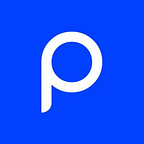Democratizing the Build: Some of our favorite no-code tools
A picture is worth a thousand words, but an interactive prototype is worth all the time in the world. Granting people new design delivery capabilities, No-code or low-code tools allow anyone to create digital content without knowing how to code. These applications lower the barriers of entry by simplifying complex programming processes with graphical interfaces that are designed for universal functionality. Encompassing prototyping and design, website and app building, and more, the no-code revolution is democratizing digital content creation and empowering multidisciplinary teams like never before.
At propelland we’re using no-code / low-code tools every day. Some have become propeller staples, but the ecosystem is continually evolving and making people more productive in the process. Here we discuss a few of the no-code / low-code tools our propellers are particularly excited about and why:
1. Webflow
On the surface, Webflow is an intuitive website-building platform — a no-code alternative to open-source content management systems like WordPress. A closer look reveals Webflow’s real focus on accessibility, giving users at any experience level the ability to quickly design and build responsive websites. The company continues to democratize web design as shown through Webflow Classroom, a free CMS site plan for students to help them launch their portfolios. Just as this tool benefits beginners, it has also become a valuable prototyping tool for us at propelland, allowing our teams to efficiently develop, iterate, and test site designs for our clients.
Here’s what propellers had to say about Webflow:
“Webflow has many options for customization and added functionality and integrations. Also, there’s a really vibrant community around Webflow. I was trying to add a membership portal to my site and reached out to the community on Twitter. I received recommendations within a day!” — Katherine Li, North America Strategy Lead
2. Bubble
Apps have become an essential touchpoint for brands looking to grow their businesses. But even coding the simplest web app could take weeks or months to complete. That’s where Bubble comes in, offering a no-code visual approach to traditional web app development. Not only does it allow anyone to build fully functional web applications, but it also enables teams to easily collaborate on web app development together. If you’re curious about what kind of apps can be built with Bubble, its How To Build series show you how to build apps like Instagram, Dropbox, Netflix, and more.
Here’s what propellers had to say about Webflow:
“Bubble is fast and easy to prototype with. It has a responsive web design built in that is relatively easy to optimize for mobile. It’s probably more technical than other no-code tools but it has lots of free plug-ins for almost any functionality you can think of” — Carlo Rizalado, Industrial Designer
“I’ve used Bubble to create backends including databases, third-party integrations, front-end logic, and building an SMS chatbot. I haven’t seen any other front-end low code/no-code tools that have the option of an internal database and it has sufficient functionality.” — Ammani Nair, Senior Design Technologist
3. Zapier
Nobody enjoys performing tedious administrative tasks that take away time from more important work. Saving its customers an average of 10 hours of work per week, Zapier is a no-code tool that helps automate repetitive tasks between two or more apps. Whether it’s adding WordPress newsletter signups to a MailChimp contact list, or taking care of sending out weekly reminders to teams, Zapier makes the automation of daily tasks and workflow automation easy. At its first-ever user conference, ZapConnect 2021, Zapier unveiled a new beta offering called Transfer that allows Zapier users to move data in bulk from one app to another, saving them even more time in the future.
Here’s what propellers had to say about Zapier:
“Zapier already has integrations with 3000+ apps/services, making it easy to connect one service to another. It lets us set up all types of automations that run in the background. They’re triggered as new data comes in so we don’t have to worry about them.” — Sid Vanchinathan, Founding Partner & Chief Operating Officer
Bonus: Figma
For us, most journeys begin with Figma. While not technically a no-code tool on its own, Figma is a prototyping tool that features endless no-code integrations making it an extension of the ecosystem. Figma is perfectly suited for a global studio like propelland. It enables us to come together and collaborate on designs in real-time, no matter where each of our team members are in the world. Understanding that cross-collaboration is crucial from beginning to end of the design process, Figma launched the infinite whiteboarding tool FigJam for a better team brainstorming experience.
Here’s what propellers had to say about Figma:
“I find the ability to drop in comments and collaborate super helpful. It also allows us to communicate information differently and to challenge the typical deck structure.” — Jimena Gruijarro, North America Strategy Lead
